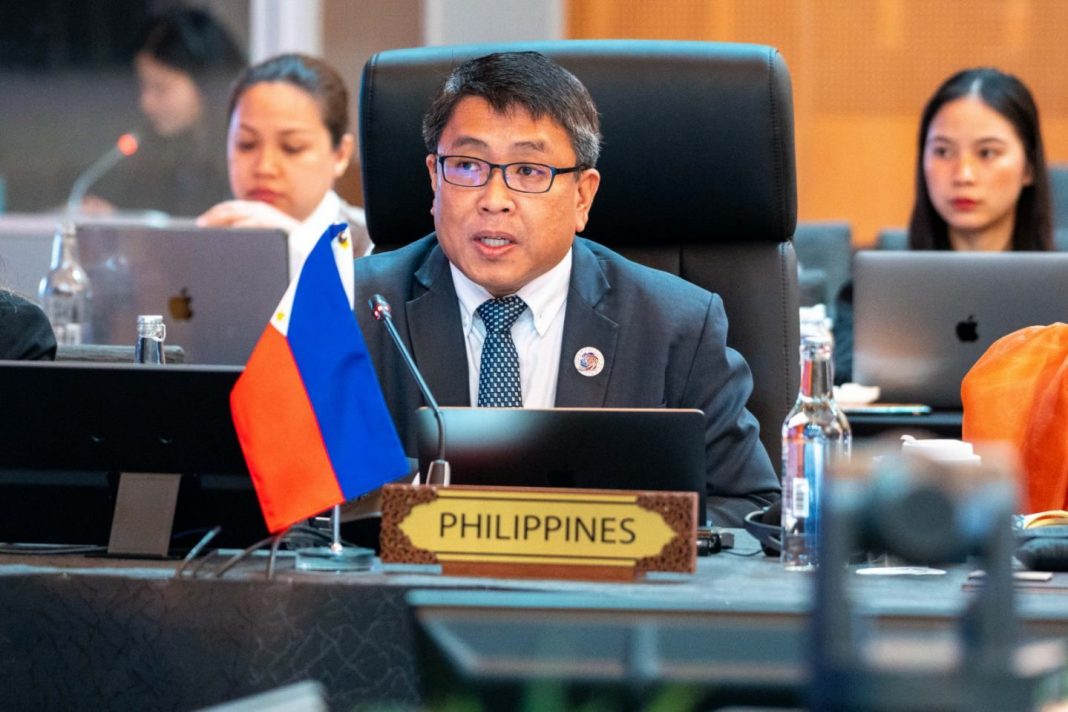The Philippines expects to have a total of 13 free trade agreements (FTAs), including upgrades of existing regional trade pacts, as the Marcos administration is stepping up negotiations to ensure implementation before it bows out of office in 2028.
Trade and Industry Undersecretary Allan B. Gepty, who heads the technical side in government’s FTA negotiations, identified the FTA deals in a speech during the British Business Chamber’s Mid-Year Economic Briefing on Friday, July 31, at Dusit Thani Hotel Makati.
These trade pacts are the following: Regional Comprehensive Economic Partnership (RCEP), PH-Korea FTA, PH-EU FTA, PH-UAE Comprehensive Economic Partnership Agreement, PH-Chile Comprehensive Economic Partnership Agreement, PH-India Preferential Trade Agreement, PH-Canada FTA, PH-Israel, ASEAN-Australia-New Zealand FTA Upgrade, ASEAN-China Free Trade Area (ACFTA 3.0), ASEAN-Hong Kong FTA, ASEAN-Canada FTA, and the Progressive and Comprehensive Trans Pacific Partnership (CPTPP).
“If this will happen, my calculation would basically is that we’ll be having around 13 free trade agreements, including the CPTPP, by 2028,” he said.
Gepty said that the Marcos administration has been very clear in its directive for the Philippines to advance, purposive, assertive and forward looking free trade deals.
“If you will recall the statement of President Marcos, it his 2023 State of the Nation address, he was very categorical in instructing us to forge more economic partnerships. That is why you will note that recently the Philippines has been negotiating a lot of free trade agreements,” he added.
For instance, FTA negotiation with the European Union is ongoing after getting stalled during the Duterte administration on differences in human rights issue, one of the EU’s conditions in the FTA.
The ongoing negotiation with Chile, he said, is a big milestone that will serve as Philippines’ network in the Latin American region. It will be the first FTA with the Latin American country. Interestingly, he said, Chile is also an emerging and dynamic economy in that region.
“We are about to start our preferential trade agreement with India, which is our big market,” he said.
“We are also exploring the possibility of an FTA with Canada,” he said noting that an FTA with Canada will be another milestone in the North American region.
Recently, the DTI said it is exploring FTA with Israel. In the Middle East, the Philippines is scheduling the signing of the comprehensive economic partnership agreement with the United Arab Emirates.
At the regional front, Gepty said, the DTI is actively upgrading its various trade agreements under the auspices of ASEAN.
“We just concluded the Chin-China FTA 3.0. We are already done with the Asian Australian New Zealand FTA, also the Asian HK-FTA, and of course, the ongoing ASEAN-Canada FTA,” he said.
The FTAs, Gepty said, give signal to the global community that the Philippines is indeed ready, and FTA partners can benefit and invest in the Philippines.
Gepty also attributed to the FTA deals the resilience of the Philippine economy despite prevailing global trade uncertainties.
In the first quarter of 2025, the Philippine GDP grew at 5.4 percent, while government expenditures surged by 22.4 percent.
The Organization for Economic Co-operation and Development (OECD) also projected a GDP growth of 5.6 percent for 2025, positioning the Philippines as the fastest growing economies in southeast Asia, outpacing the 4.7 percent regional average growth, and surpassing major neighbors, including India, which is at 4.9 percent, Malaysia only at 4.4 percent, and Singapore at 3.8 percent.




